One of the historical types of leather treatment was with alum.
September 10, 1777 The Pennsylvania Gazette
"N.B. Ready money is given, by said Mentz, for any quantity of tanned and allom dressed sheep skins."
THE SOUTH CAROLINA GAZETTE
November 5, 1737
"This is to give Notice, that Tho. Robinson living in one of Mr. Laurens new Houses, No. 3, dresses Buck Skins, prepares Alom Leather, washes and [dyes?] Buck skin Breeches of several Colours, and likewise buys Buck Skins, that are not merchantable."
It’s interesting stuff, with an interesting history. The process for making it is called tawing. Taw is defined as ”˜to transform the skin of an animal into white leather by the application of minerals, emulsions, etc.’ The chemicals used are alum and salt, mainly. One who does that is called a tawer. White leather is just that, the process apparently bleaches the hide. Down through time ”˜white leather’ became ”˜whitleather’. The stuff is limber, soft, but very tough, so we have the old saying, “tough as whitleather”.
THE SOUTH CAROLINA GAZETTE
August 10, 1738
Charleston, South Carolina
This is to give Notice, that Mary Robinson Widow of Th: Robinson deceased, still carries on his Trade in the same House, viz Mr. Laurens's House Number (3) near the New-Market, she has ready made Buck and Doe skin Breeches, either natural or black, purple and Cloth Colours, likewise white Leather, a choice parcel of fine Wool. She also dresses Deer Skins with or without the Hairs, dyes, washes and mends Buck-skin Breeches."
I was given a small piece of homemade alum deerskin many years ago, and I made it into a small belt bag. I use if for a variety of jobs, it has seen hard use for a long time, but it has lived up to it’s reputation, it’s tough. It’s has taken on a bit of patina over the years, and is no longer very white.
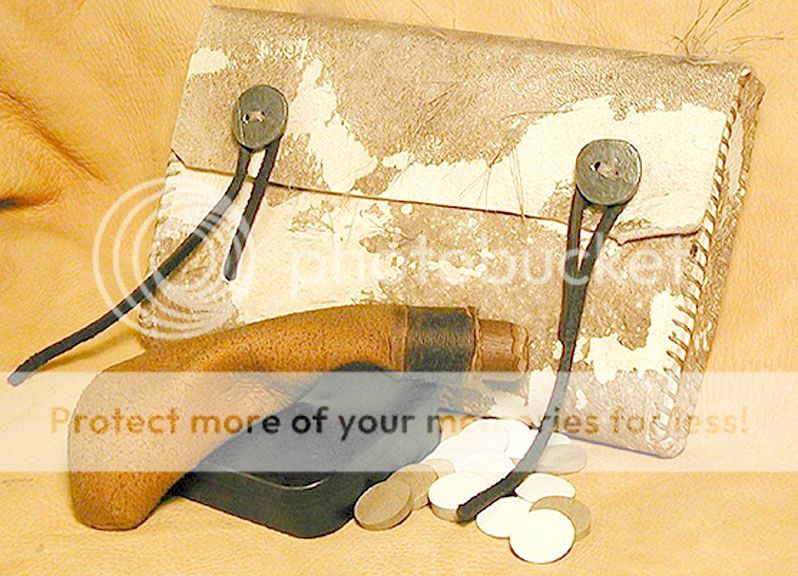
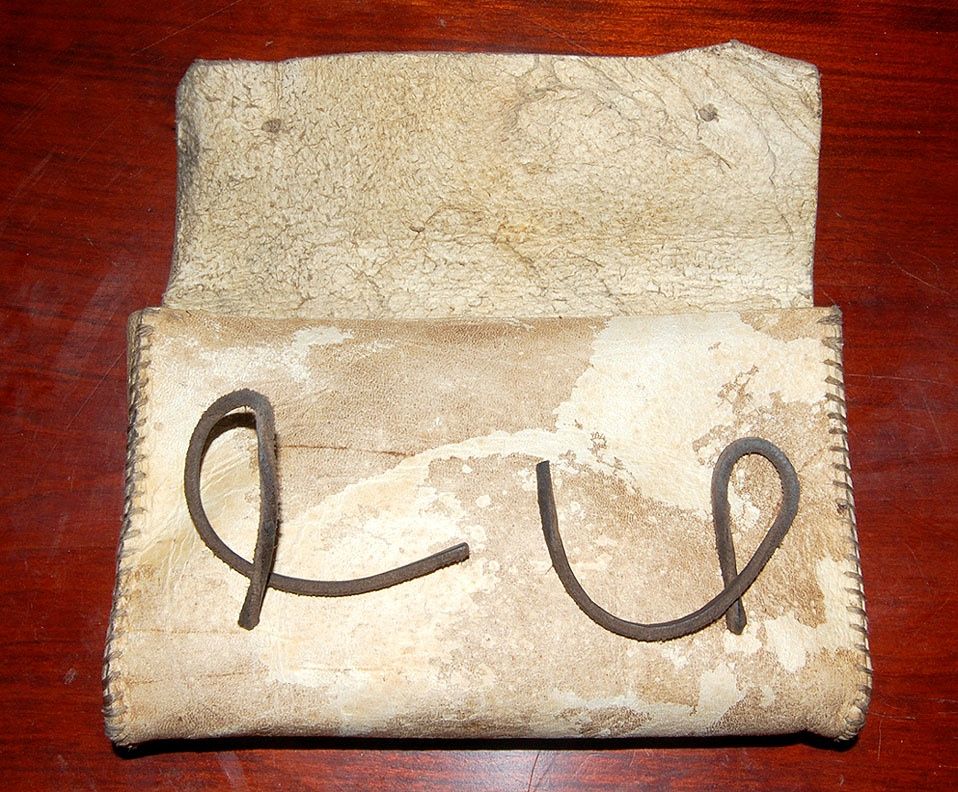
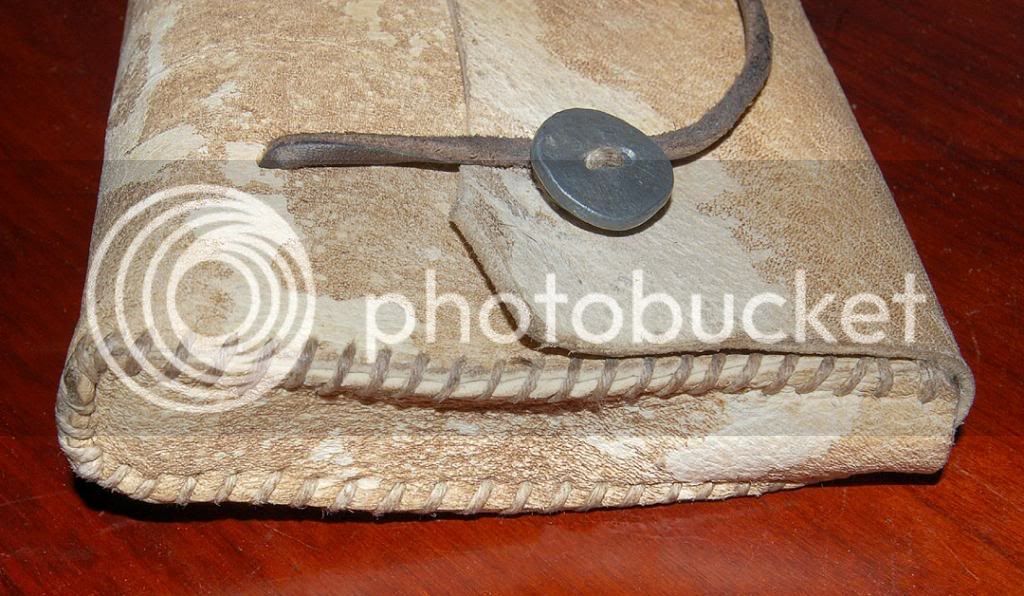
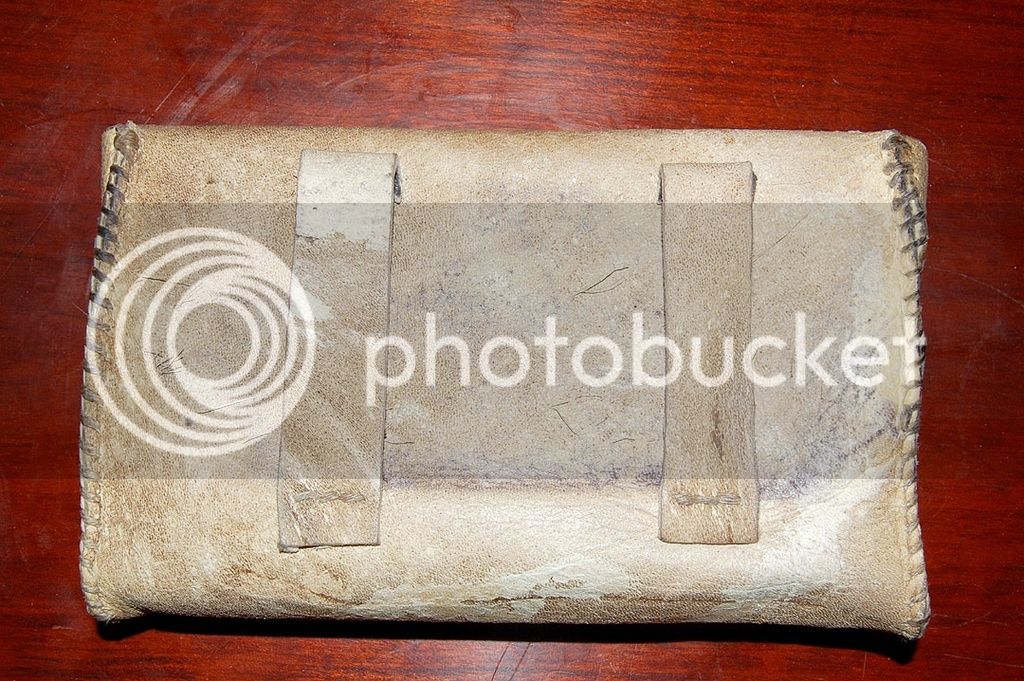
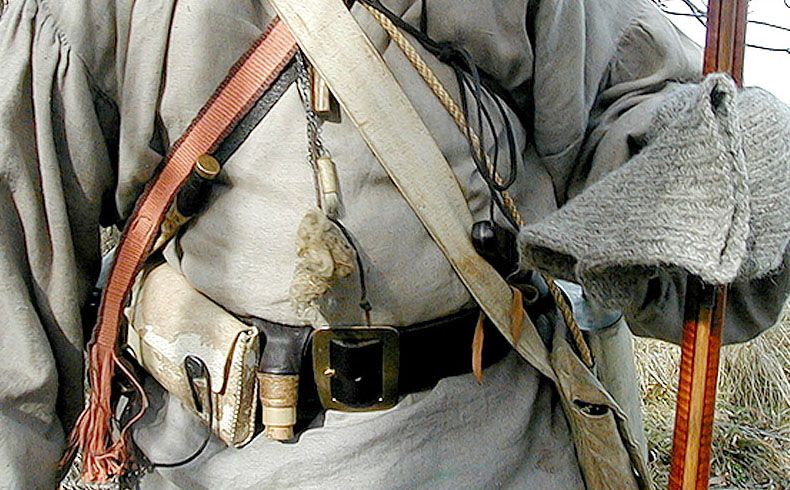
It’s just one piece folded into the bag with inserts sewn in the ends using waxed flax thread. The closure is just a couple of lead balls pounded flat, with leather thongs to wrap and secure them.
Has anyone else worked with alum leather aka whitleather?
Spence
September 10, 1777 The Pennsylvania Gazette
"N.B. Ready money is given, by said Mentz, for any quantity of tanned and allom dressed sheep skins."
THE SOUTH CAROLINA GAZETTE
November 5, 1737
"This is to give Notice, that Tho. Robinson living in one of Mr. Laurens new Houses, No. 3, dresses Buck Skins, prepares Alom Leather, washes and [dyes?] Buck skin Breeches of several Colours, and likewise buys Buck Skins, that are not merchantable."
It’s interesting stuff, with an interesting history. The process for making it is called tawing. Taw is defined as ”˜to transform the skin of an animal into white leather by the application of minerals, emulsions, etc.’ The chemicals used are alum and salt, mainly. One who does that is called a tawer. White leather is just that, the process apparently bleaches the hide. Down through time ”˜white leather’ became ”˜whitleather’. The stuff is limber, soft, but very tough, so we have the old saying, “tough as whitleather”.
THE SOUTH CAROLINA GAZETTE
August 10, 1738
Charleston, South Carolina
This is to give Notice, that Mary Robinson Widow of Th: Robinson deceased, still carries on his Trade in the same House, viz Mr. Laurens's House Number (3) near the New-Market, she has ready made Buck and Doe skin Breeches, either natural or black, purple and Cloth Colours, likewise white Leather, a choice parcel of fine Wool. She also dresses Deer Skins with or without the Hairs, dyes, washes and mends Buck-skin Breeches."
I was given a small piece of homemade alum deerskin many years ago, and I made it into a small belt bag. I use if for a variety of jobs, it has seen hard use for a long time, but it has lived up to it’s reputation, it’s tough. It’s has taken on a bit of patina over the years, and is no longer very white.





It’s just one piece folded into the bag with inserts sewn in the ends using waxed flax thread. The closure is just a couple of lead balls pounded flat, with leather thongs to wrap and secure them.
Has anyone else worked with alum leather aka whitleather?
Spence






